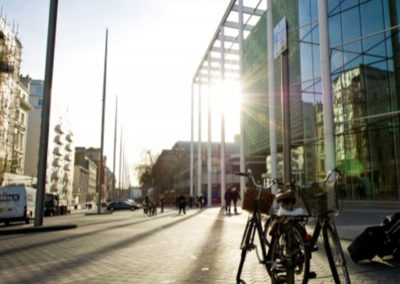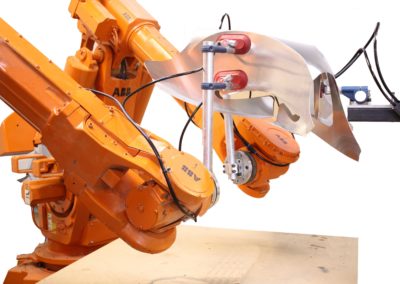Design advice on eco-ventilation system for homes
Client: Ventive Ltd, a CleanTech start up
Consultant: Professor Peter Childs, Department of Mechanical Engineering
Expertise: Sustainable energy system design & proof of concept prototype development
Our consultants shared their expertise in sustainable energy system design to help Clean Tech start up ‘Ventive Ltd’ to move into new markets with their PVHR (passive ventilation with heat recovery) system.
Older buildings in the UK often have gaps in the building envelope around unsealed window frames and other areas. Sealing off these gaps can help to reduce heat wastage and manage soaring domestic energy bills. However, this also reduces the level of ventilation in the property, causing an unhealthy build up of chemicals, bacteria, mould and humidity inside.
The award-winning company Ventive Ltd addresses this problem with their innovative and eco-friendly PVHR (passive ventilation with heat recovery) system. The technology can be installed onto chimney stacks or between the rafters of a house and uses a combination of the upward force of air (air buoyancy) and wind to create a flow of air within the building interior, ensuring that a greater than minimum standard of air quality is achieved and maintained. The heat recovery action between the inflowing and extracted air enables efficient heating of a property in winter and cooling in the summer.
The challenge
Ventive Ltd were looking to expand into new export markets across warmer climatic zones. The challenge they faced was that air buoyancy is reduced in warmer temperatures, meaning the current PVHR system would be less efficient in the summer and in warmer climates. In order to be successful in their new target markets, it was essential that they addressed this issue.
The solution
Ventive Ltd approached Professor Peter Childs, from the Department of Mechanical Engineering, to help find a solution to the problem based on his expertise in prototype design, heat transfer and fluid flow.
Professor Childs comments:
Improving energy efficiency by making homes airtight has huge implications in terms of consumer energy bills and the environment, but the health implications caused by the lack of ventilation need to be addressed to make it a truly successful practice. I was really keen to be involved in something that could potentially revolutionise homes across the world in the not too distant future.
Professor Peter Childs
Department of Mechanical Engineering, Imperial College London
Professor Childs assisted the Ventive Ltd team in identifying and testing alternative methods to passively accelerate the velocity of the exhaust air, so as to maintain a constant, satisfactory level of ventilation. He also provided support in Computational Fluid Dynamics (CFD) simulations and their validation.
Once a workable solution had been identified, Professor Childs helped to quantify the performance of a proof of concept prototype involving a custom heat pipe for the passive acceleration of extracted air. The new prototype was installed and tested in Cyprus, where natural buoyancy works against passive ventilation for the majority of the year. Professor Childs provided advice on both data collection and analysis during this testing period.
The impact
The results of the testing in Cyprus revealed a clear link between solar irradiation, which corresponds to an increase in outside temperature, and an increase in exhaust air velocity from the new system, validating the effectiveness of the prototype.
Mr Thomas Lipinski, CEO of Ventive Ltd comments:
The technological breakthrough demonstrated in this project brings us a step closer to producing a passive ventilation system designed for year-round performance, meaning we will be able to tap into vast export markets such as Southern Europe, Southern US and the Middle East.
Thomas Lipinski
CEO – Ventive Ltd
Ventive Ltd is aiming to become the brand behind fresh and healthy air that is comfortably warm or cool regardless of the market or location. Professor Childs has brought them closer to achieving this vision.
Over the period of the relationship, the company has grown from a small start up to a £900k investment round, with further rounds of investment in progress.
Share post:
Related case studies

Building a low carbon economy with ICT
Our consultants shared their expertise in economics to help Microsoft explore how ICT can play an enabling role in low carbon economies to reduce CO2 emissions. read more

Exhibition Road Showcase
Our consultants shared their expertise in traffic monitoring and evaluation for the Royal Borough of Kensington and Chelsea when they began work on the Exhibition Road shared space scheme. read more

High precision metal folding methods
Our consultants shared their expertise in finite element modelling to help RoboFold take their RoboFold system into mass production. read more